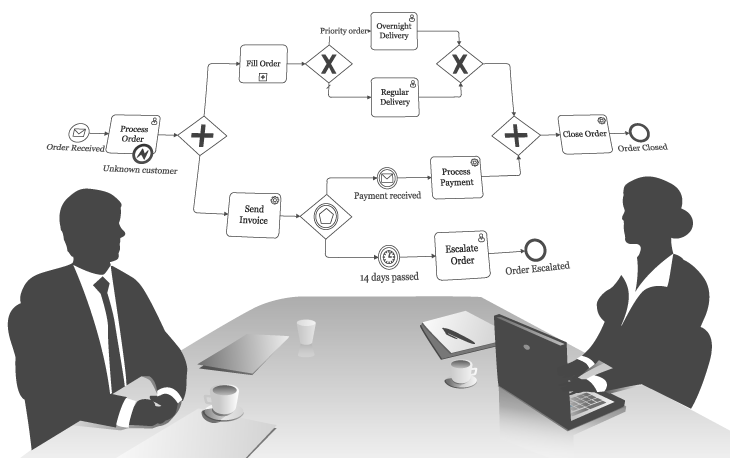Business Process Modeling as a means to bridge The Business-IT Divide
Back in 2011 I finished my Information Sciences master's by writing a thesis about Business Process Modeling as a communication technique between technical and non-technical stakeholders. This thesis subsequently won an award in 2012. Today, I realized that the place I used to host my thesis has been offline for quite a while, so I'm republishing it on my website as an article.

A great number of business process modeling endeavors aim to create representations of business processes which can be translated to computer software by IT stakeholders while remaining understandable to business stakeholders. However in practice, business process models rarely meet these high demands, leading either to models which are too informal to be interpreted by a computer or to models which are incomprehensible to business stakeholders. Our research attempts to assess why these problems occur and whether it is fundamentally feasible to create models that meet these demands.
Although the topic of business process modeling has received great attention from the research community, most of this attention is focused on the formal aspects of these models, such as computer simulation or mathematical properties. In contrast, little research addresses the informal aspects of these models, such as their accuracy in representing the real world business processes they are based on. We argue that these informal aspects play a pivotal role in creating a shared understanding of business processes among business and IT stakeholders.
We performed a two phase research in order to answer the question whether business process modeling can serve as a common language between business and IT stakeholders. The first phase is of a philosophical nature as it addresses a wide range of theories. These include the historic business-IT alignment problem, theories on language, conceptual modeling and generic system design principles. The second phase is of an empirical nature as it focuses on a case study of a real world BPM project. The study reveals a series of problems which we subsequently generalized using our theories gathered during the first phase. This allows us to not only produce a list of generic issues currently affecting BPM projects, but also to explain why these issues occur and how they can be avoided.
Most notably, our research reveals how the different manner in which business and IT stakeholders create and interpret business process models can lead to misunderstandings. Additionally, our results show that the influence of the IT discipline on BPM actually inhibits the development of business friendly modeling languages. We argue that if BPM is to truly become a management discipline, the focus should be placed on the usability of process modeling for the business, rather than IT.